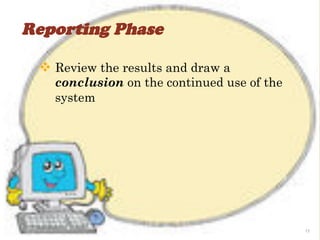Legacy systems
- 1. Legacy Systems Validation Strategy 18th Annual Validation Week Philadelphia, October 2012 Yau Kai Wong AD, QA Compliance & Validation Novartis Pharma Corp.
- 2. Agenda v What is Legacy System v Issues with Legacy System v Regulatory Standards v Objective Benefits of Legacy System Validation v Remediation Process Flow 2
- 3. What is a legacy system? v There is no formally accepted definition of “Legacy System” v GAMP Good Practice Guide (GPG) – a Legacy System should be considered to be an GxP relevant system that is in place and in use, and which is deemed not to satisfy current regulatory expectations. 3
- 4. Issues Encountered with Legacy System v Ownership of system v Validation package v Security v System functionality v Data integrity v Archiving of data 4
- 5. Regulatory Standard v CFR – 21 CFR v ICH – GMP v Industry – ISPE, ASTM v Corporate – Quality Manual, Policies, SOPs, 5
- 6. Objective of Legacy System Validation v To ensure that the legacy system properly supports the process v To ensure that the legacy system has been properly installed, is operated correctly, and that procedures and practices are in place to allow it to be maintained in a state of control throughout its useful life v To provide a framework to demonstrate regulatory compliance 6
- 7. Objective of Legacy System Validation v To establish a complete set of system documentation providing a precise definition of the operating environment, functionality, hardware and software, procedures and reference manuals associated with the legacy system v To provide indexes to the documentation set (i.e. by the use of traceability matrices for documents and user requirements) 7
- 8. Benefits of Legacy System Validation v Assurance that the system is fit for purpose and relevant to the process that it supports, from both a business perspective and a GxP perspective v Understand of the actions required to achieve compliance with evolving regulations, e.g. 21 CFR Part 11 v Enhance confidence in the engineering of the legacy system 8
- 9. Benefits of Legacy System Validation v Demonstration that users are competent to operate the legacy system to an appropriate level and are provided with approval procedures v Provision of a baseline from which to manage change control v Potential to reduce system maintenance costs 9
- 10. Remediation Process Flow 10
- 11. Typical Legacy System Remediation Process v Scope v Gap analysis & risk Assessment v Planning v Specification ² Design ² Configuration Management v Qualification v Reporting v Maintaining the Validated State 11
- 12. Scope Phase v A Master Plan, or equivalent document, formally identifies the Legacy System under review ² Reviewed and updated to ensure that it includes all legacy systems and references all legacy system qualification activities 12
- 13. Gap Analysis & Risk Assessment v Conduct gap analysis against industry standard, ”V-model”, change control history v Determine the difference between what is in place and what is required to demonstrate the system is in control v Perform risk assessment to determine the criticality of the system to the process v Gap analysis and risk assessment together will help determine the qualification strategy and remediation priority 13
- 14. Planning Phase v Established a Plan (e.g. RMP, QMP, etc.) ² responsibilities ² priorities ² what activities will be undertaken to qualify the system 14
- 15. Specification Phase v User requirement - need to understand in detail the business process or production process the legacy system supports v Contains the up-to-date system description covering hardware, software, and the system environment 15
- 16. Qualification Phase v Using the “V-model” as the framework v Installation qualification ² Confirm compliance with the controlling specifications and create new baseline against which to manage ongoing change control v Operational qualification ² Demonstrate that the system works across its expected operating ranges, and challenge the critical areas v Performance qualification ² May or may not needed 16
- 17. Reporting Phase v Review the results and draw a conclusion on the continued use of the system 17
- 18. Operational Phase v Ensure that the operational part of the legacy system’s lifecycle is maintained in its validated state ² Roles and responsibilities ² SOPs up-to-date ² Change control management ² Incident management ² Performance monitoring ² Configuration management ² Periodic review ² Record retention, archiving, and retrieval ² Retirement 18



















